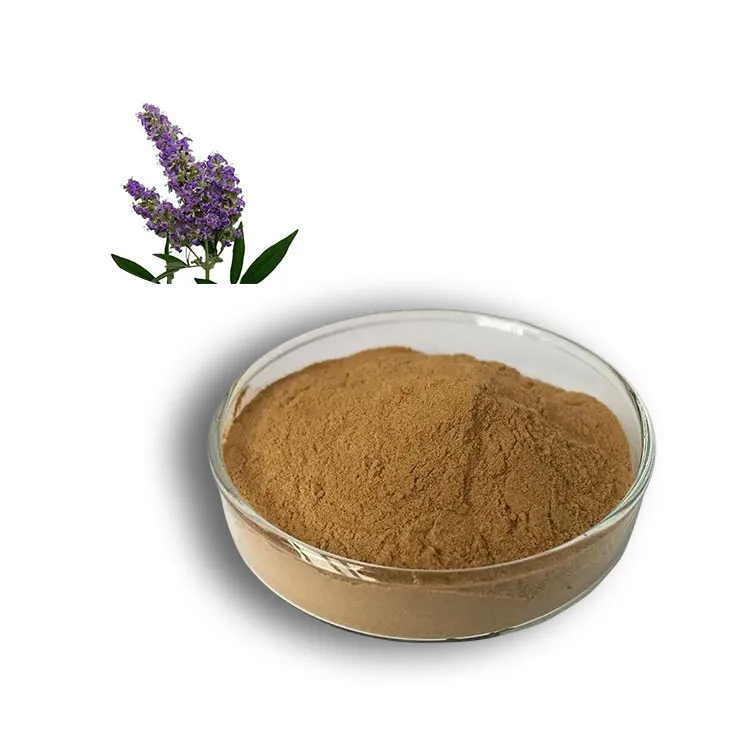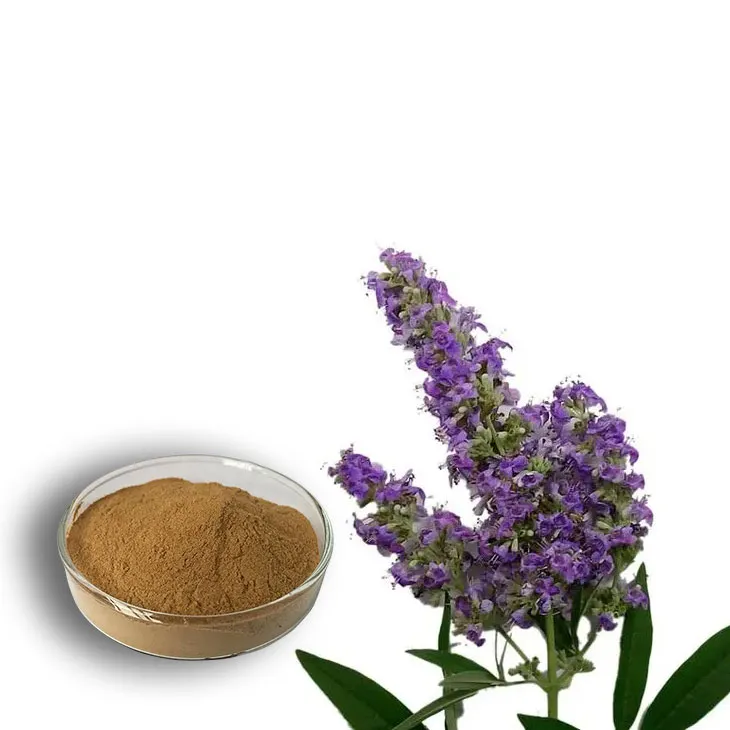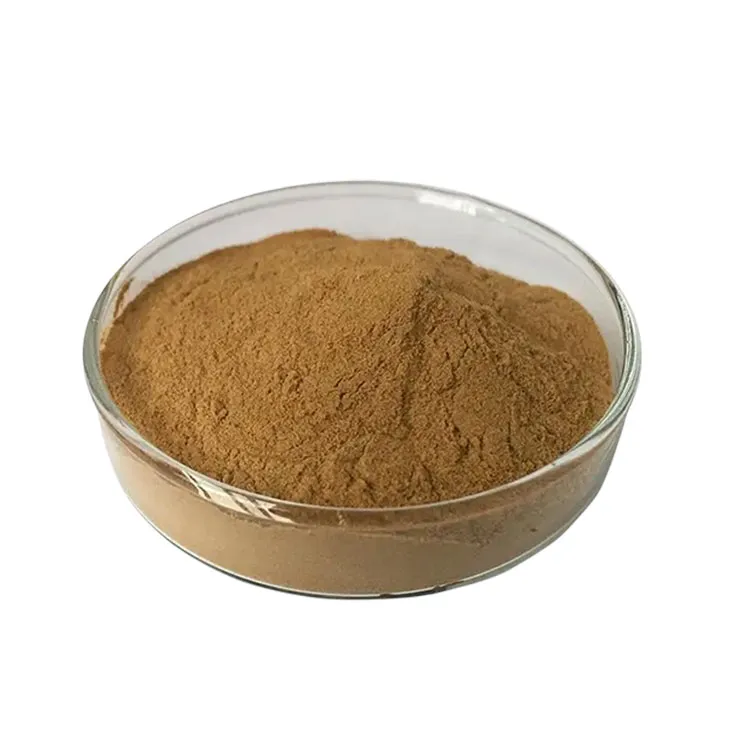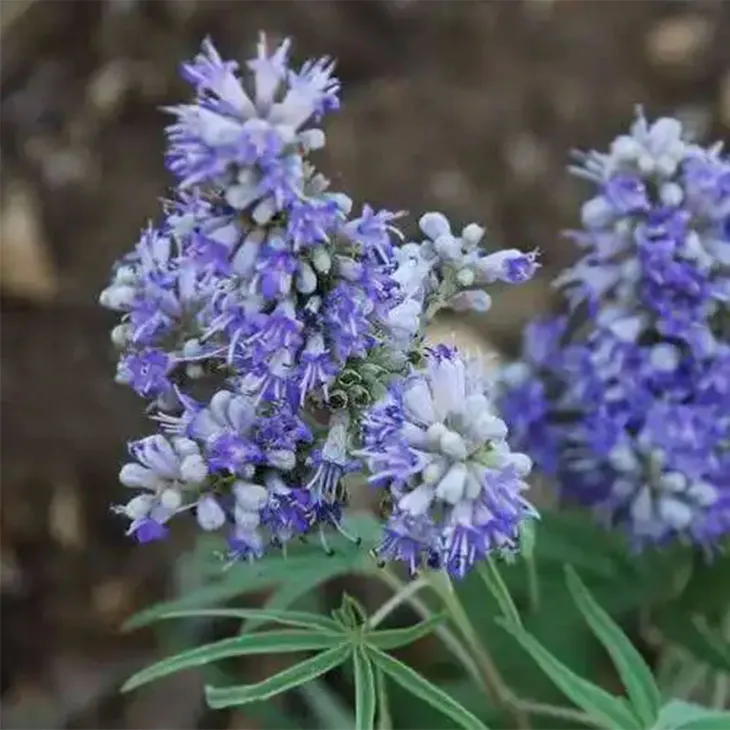- 0086-571-85302990
- sales@greenskybio.com
Does chasteberry extract have benefits for diabetes? Are these all safe and suitable for diabetic patients?
2024-11-12

1. Introduction
Diabetes is a chronic metabolic disorder that affects millions of people worldwide. Management of diabetes typically involves lifestyle modifications, such as diet and exercise, as well as medications in some cases. In the search for complementary or alternative treatments, natural products like Chasteberry Extract have come under scrutiny. Chasteberry (Vitex agnus - castus) has a long history of use in traditional medicine for various health conditions. However, its potential role in diabetes management and its safety for diabetic patients need to be thoroughly examined.

2. Scientific Research on Chasteberry Extract and Diabetes
2.1. In vitro Studies
Some in vitro studies have investigated the effects of Chasteberry Extract on key processes related to diabetes. Insulin resistance is a major factor in type 2 diabetes. Research has shown that certain components in chasteberry extract may interact with cells involved in insulin signaling. For example, flavonoids present in the extract have been hypothesized to enhance insulin receptor sensitivity in cell cultures. This could potentially lead to improved glucose uptake by cells, similar to the action of some anti - diabetic drugs.
Another aspect studied in vitro is the effect on glucose production in liver cells. High blood glucose levels in diabetes can be due in part to excessive glucose production by the liver. Some experiments suggest that chasteberry extract may have the ability to modulate enzymes involved in hepatic glucose production, thereby reducing the amount of glucose released into the bloodstream.
2.2. Animal Studies
In animal models of diabetes, chasteberry extract has shown some promising results. In diabetic rats, for instance, supplementation with chasteberry extract has been associated with a reduction in fasting blood glucose levels. This was accompanied by improvements in other metabolic parameters such as triglyceride and cholesterol levels. The mechanisms proposed in these animal studies include modulation of hormonal balance, particularly in relation to hormones involved in glucose metabolism like insulin and glucagon.
Some animal studies also suggest that chasteberry extract may have a protective effect on pancreatic beta - cells. These cells are responsible for insulin production, and their destruction or dysfunction is a hallmark of type 1 diabetes and also occurs in advanced type 2 diabetes. By protecting beta - cells, the extract may help to maintain or improve insulin production, which is crucial for blood glucose control.
2.3. Human Studies
Human studies on the effect of chasteberry extract in diabetes are relatively limited. However, some small - scale clinical trials have been conducted. In a short - term study involving diabetic patients, a trend towards a reduction in post - prandial (after - meal) blood glucose levels was observed in those taking chasteberry extract supplements. But it is important to note that the sample size was small, and more research is needed to confirm these findings.
Another study looked at the impact of chasteberry extract on glycemic control over a longer period. While there were some improvements in glycated hemoglobin (HbA1c) levels in the treatment group compared to the placebo group, the differences were not statistically significant. This could be due to factors such as the variability in patient compliance, differences in diet and lifestyle among participants, or the fact that the extract may have a relatively mild effect that requires a larger sample size or longer duration of study to be detected.

3. Possible Mechanisms of Action
3.1. Hormonal Regulation
Chasteberry extract is known to have an impact on hormonal balance. In the context of diabetes, this could be significant. For example, it may influence the hypothalamic - pituitary - adrenal (HPA) axis, which in turn can affect insulin secretion and glucose metabolism. By modulating the levels of hormones such as cortisol, which can affect blood sugar levels, chasteberry extract may contribute to better glycemic control.
It may also interact with sex hormones. In some cases, hormonal imbalances, particularly in women, can be associated with insulin resistance. Chasteberry extract has been traditionally used to regulate menstrual cycles in women, and it is possible that this hormonal regulation may have secondary benefits for glucose metabolism in diabetic female patients.
3.2. Anti - Inflammatory Effects
Chronic inflammation is increasingly recognized as a contributing factor to the development and progression of diabetes. Inflammatory mediators can interfere with insulin signaling and lead to insulin resistance. Chasteberry extract contains compounds with anti - inflammatory properties. These compounds may help to reduce inflammation in the body, particularly in adipose tissue and the liver, which are important sites in the context of diabetes. By reducing inflammation, the extract may improve insulin sensitivity and glucose metabolism.
3.3. Antioxidant Activity
Oxidative stress is another factor associated with diabetes. High blood glucose levels can lead to the production of reactive oxygen species (ROS), which can damage cells, including pancreatic beta - cells. Chasteberry extract has antioxidant activity, which means it can scavenge ROS and protect cells from oxidative damage. This antioxidant effect may help to preserve the function of beta - cells, as well as other cells involved in glucose metabolism, thereby potentially aiding in diabetes management.

4. Safety Considerations for Diabetic Patients
4.1. Interaction with Medications
One of the major concerns regarding the use of chasteberry extract by diabetic patients is its potential interaction with medications. Many diabetic patients are on drugs such as metformin, sulfonylureas, or insulin. Chasteberry extract may interact with these medications, either enhancing or reducing their effectiveness. For example, if it enhances the hypoglycemic effect of medications, it could lead to dangerously low blood sugar levels (hypoglycemia). On the other hand, if it reduces the effectiveness of medications, it could result in poor glycemic control.
It is essential for diabetic patients considering the use of chasteberry extract to consult their healthcare providers. They should inform their doctors about any supplements they plan to take, including chasteberry extract, so that appropriate monitoring and adjustments to their medication regimens can be made.
4.2. Allergic Reactions
Some individuals may be allergic to chasteberry or components of the extract. Allergic reactions can range from mild symptoms such as skin rashes, itching, or swelling to more severe reactions like difficulty breathing or anaphylaxis. Diabetic patients, like any other individuals, should be cautious when starting to use chasteberry extract and should be aware of the signs of an allergic reaction. If any allergic symptoms occur, they should stop using the extract immediately and seek medical attention.
4.3. General Health Effects
Although chasteberry extract is generally considered safe when used in appropriate doses, there may be some general health effects that need to be considered. For example, in some cases, it may cause gastrointestinal disturbances such as nausea, vomiting, or diarrhea. These symptoms can be particularly concerning for diabetic patients, as they can affect nutrient absorption and overall well - being. Additionally, long - term use of the extract may have unknown effects on other organ systems, and more research is needed to fully understand its safety profile.

5. Conclusion
Chasteberry extract shows some potential benefits for diabetes based on scientific research, including in vitro, animal, and some human studies. Its possible mechanisms of action involve hormonal regulation, anti - inflammatory effects, and antioxidant activity. However, the safety of chasteberry extract for diabetic patients is not fully established. There are concerns regarding potential interactions with medications, allergic reactions, and general health effects. More research, particularly large - scale, long - term human studies, is needed to better understand the benefits and safety of chasteberry extract in the context of diabetes management. Until then, diabetic patients should exercise caution when considering the use of chasteberry extract and should always consult their healthcare providers.
FAQ:
1. What is chasteberry extract?
Chasteberry extract is derived from the fruit of the chaste tree (Vitex agnus - castus). It has been used in traditional medicine for various purposes, such as hormonal regulation in women.
2. How might chasteberry extract benefit diabetes?
Some research suggests that chasteberry extract may have anti - inflammatory properties. In diabetes, chronic inflammation is often present. It may also potentially influence insulin sensitivity. However, more research is needed to fully understand these mechanisms and their significance in diabetes management.
3. Are there any studies specifically on chasteberry extract and diabetes?
Yes, there are some studies. But currently, the number of large - scale, high - quality clinical trials is limited. Some preliminary in - vitro and small - scale in - vivo studies have shown certain effects on blood glucose regulation and related metabolic factors, but the results are not conclusive enough.
4. Is chasteberry extract safe for all diabetic patients?
No. Diabetic patients may have different health conditions and be taking other medications. Chasteberry extract may interact with certain medications, such as drugs for hormonal regulation or blood glucose - lowering drugs. Also, some individuals may be allergic to it. So, it is not safe for all diabetic patients without proper medical evaluation.
5. How should diabetic patients use chasteberry extract if they consider it?
If diabetic patients are thinking about using chasteberry extract, they should first consult their healthcare providers. The healthcare provider can assess their overall health status, including other medical conditions and medications they are taking. Based on this assessment, the provider can give advice on whether it is appropriate to use, the proper dosage, and how to monitor for any potential side effects.
Related literature
- Potential of Chasteberry Extract in Diabetes Management: A Review of Current Evidence"
- "Chasteberry Extract and its Impact on Metabolic Disorders, with a Focus on Diabetes"
- "Safety and Efficacy of Herbal Supplements, including Chasteberry Extract, in Diabetic Patients"
- ▶ Hesperidin
- ▶ Citrus Bioflavonoids
- ▶ Plant Extract
- ▶ lycopene
- ▶ Diosmin
- ▶ Grape seed extract
- ▶ Sea buckthorn Juice Powder
- ▶ Fruit Juice Powder
- ▶ Hops Extract
- ▶ Artichoke Extract
- ▶ Mushroom extract
- ▶ Astaxanthin
- ▶ Green Tea Extract
- ▶ Curcumin
- ▶ Horse Chestnut Extract
- ▶ Other Product
- ▶ Boswellia Serrata Extract
- ▶ Resveratrol
- ▶ Marigold Extract
- ▶ Grape Leaf Extract
- ▶ New Product
- ▶ Aminolevulinic acid
- ▶ Cranberry Extract
- ▶ Red Yeast Rice
- ▶ Red Wine Extract
-
Stevia Extract
2024-11-12
-
Tinospora cordifolia extract
2024-11-12
-
Feverfew Extract
2024-11-12
-
Apricot Powder
2024-11-12
-
Lotus leaf extract
2024-11-12
-
Kelp Extract Powder
2024-11-12
-
Cranberry Extract
2024-11-12
-
Ginger Extract
2024-11-12
-
Avocado Extract Powder
2024-11-12
-
Lavender Extract
2024-11-12





















